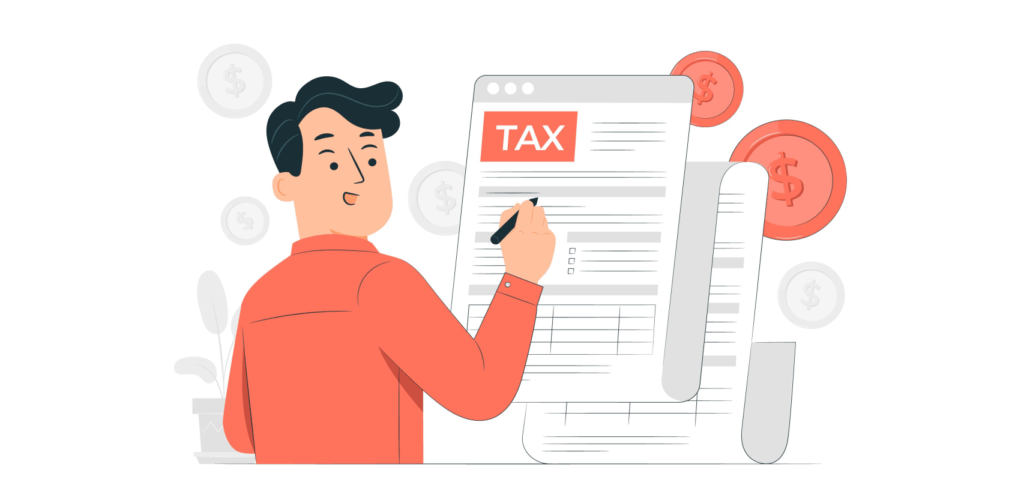Saving taxes can be hard for employees if not planned smartly.
The first thing in a job that employees look for is, Cost to Company (CTC). Employees often end up structuring salary the wrong way to get a higher CTC.
While a higher CTC provides employees financial stability, informing them about the benefits of a structured CTC, which includes allowances and perquisites, is equally important. As an employer, when your employee is unaware of strategic tax saving, you can help your employees in tax-saving.
In this blog, we will walk you through the ways you can help your employees in saving taxes and building an efficient culture.
Structured Salary
An optimal salary structure includes basic salary, various allowances such as House Rent Allowance (HRA), Leave Travel Allowance (LTA), Medical Insurance, Transport Allowance, Meal Vouchers; perquisites such as fuel expenses, driver’s salary, and retirement contributions.
Under Section 80C, a salaried individual can avail maximum deduction of INR 1,50,000 per annum. By providing flexibility in structuring the salary, you can help your employees reduce the salary to a non-taxable salary. Educate your employees on utilizing the tax exemptions in the CTC. Employees prefer these allowances and perquisites based on their convenience and requirement.
Some essential benefits that employee should utilize are employee provident fund (EPF), Home Loans, Life Insurance Premium, Equity Linked Saving Schemes, Public Provident Fund, National Saving Certificate, 5-year fixed deposits with banks or Post Office, contribution to Employees Provident Fund (EPF).
Public Provident Fund (PPF)
Provident Fund helps employees save a small amount of money on a monthly basis with an added contribution by employers which increases the amount over a period of time. The returns made on the provident fund are tax-free.
As an employer, you can educate your employees on the value of PF deduction. To benefit your employees, registration for the PF fund is mandatory. Guide your employees on the available PPF options in case your organization is not registered for PF.
Provide Gift cards and Vouchers
Gift coupons and voucher benefits are a part of the cash salary of employees, which are 100% non-taxable. These coupons and vouchers to your employees for meals and shopping. Employees can use these coupons/vouchers similar to cash, the only difference being non-taxable levied on cash purchases.
You can provide free meals to your employees, which are exempted from taxes within a limit of INR 50 per meal. A maximum of ₹12,000 of meal coupons a year are exempted from taxes provided by the employer.
Transport Allowance
Transport allowance is paid to employees commuting between respected offices to place of residence regularly. The transport allowance is tax-free if the employee opts for either of the two, own vehicle for communion or company cab.
As an employer, you can provide a maximum compensation of ₹19,500 a year to your employees. With the transport facility, employees have a benefit of availing perquisites such as fuel expenses and driver salary on using their own vehicles.
Leave Travel Allowance (LTA)
Leave Travel Allowance (LTA) is the paid travel allowance in which employees are paid for traveling while on leave. Under the Income Tax Act, employees can claim to Leave Travel Allowance (LTA) twice every 4 years for the traveling.
With this compensation allowance, employees have the benefit of claiming the travel expenses which includes the fare expenses in traveling. As an employer you should know, this allowance can be claimed only when the travel is made within India. Educate your employees on LTA and help them save tax while traveling.
Life Insurance
Providing life insurance and medical insurance is essential. Both the insurances are tax exempted and help in tax saving. As an employer, you can enable the tie-ups with an insurance company or insurance agent.
Under Section 80C, the maximum deductible amount for a financial year is ₹1,50,000. Apart from life insurance premiums, you can help employees save taxes by providing medical insurance and medical reimbursements. Medical Reimbursement is the compensation made to employees against specific medical bills submitted by them. Under Section 80D, the employer can provide a maximum limit on exemption of medical bills id ₹25,00 per annum.
For this, employees are required to submit medical bills on time. As an employer, you can make the monthly payments for your employee’s medical expenditure on his behalf in modes other than cash for which the premium amount is deducted from the employee’s salary.
Car Lease Scheme
When it comes to saving on taxes, a car lease scheme is another great option. Under this scheme, as an employer, you can make car lease payments on behalf of the employee while the employee receives a reduced salary every month. This scheme helps employees save heavy taxes and is more profitable than taking bank loans.
Strategically planning taxes helps employees save hefty amounts. As a good employer, educate your employees on tax saving and figure out the structure of the salaries so that your employees can have maximum tax saving.

